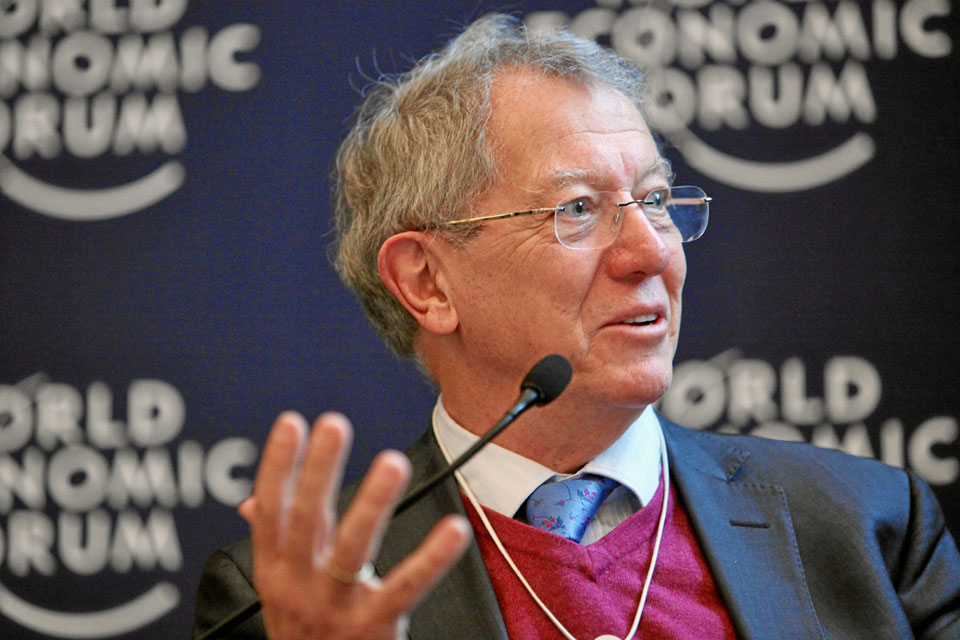'Unleashing private investment in rooftop solar in India'
Transcript of a speech by Sir David King at the launch event of report of the solar rooftop policy coalition in New Delhi, 17 March 2016.

Ladies and gentlemen, I am delighted to be participating in the launch event of the report of the solar rooftop policy coalition.
I must begin by congratulating Prime Minister Modi and Honourable Minister Piyush Goyal for setting such a clear and impressive vision for renewables in India. 175 GW by 2022 is a hugely ambitious target, by any standards, and it is clear that this vision can invigorate the renewable energy industry in India and around the world.
Secure, sustainable energy is critical to India’s economic development and the goal of 24x7 power for all by 2022. And renewable energy can play a hugely important part in this:
- by reducing dependence on imported fossil fuels and improving energy security;
- by more easily enabling the centres of generation to be distributed across the country, spreading access to energy to the hundreds of millions who currently lack it; and
- by helping to reduce carbon emissions and tackling the climate challenge that we all face.
But beyond this, I believe renewables present a huge opportunity for India to lead the world in the global energy transformation. The sheer size of the market here means that India could become the new manufacturing hub for the renewables sector – in keeping with Prime Minister Modi’s ‘Make in India’ campaign.
What happens here in India on solar could be the game-changer. We have already seen prices fall massively – from around 17 Rupees per kW/h in 2010 to around 4.6 Rupees per KW/h at the end of last year. This is making solar ever more competitive with conventional forms of power, and the rest of the world is watching. Innovation and price reduction happen when the market is there – and the market is here in India.
Prime Minister Modi’s vision for the International Solar Alliance is evidence of the leadership role that India can play in driving the solar revolution.
The UK is committed to helping make India’s vision for renewable energy a reality. Our two Prime Ministers put our collaboration on clean energy high on their agenda when they met in London in November, announcing a comprehensive package of joint work, joint research and commercial deals.
And the report being launched here today is exactly the kind of robust, evidence-based analysis that is needed to help turn the vision into reality.
The tone of the report is one of optimism, without complacency. It highlights the huge potential for rooftop solar in India, celebrates successes so far, and looks ahead to suggest concrete measures to double progress against the government’s 40 GW target by 2022.
One of the most interesting recommendations in the report is that the government should focus on building market foundations for sustained growth, as opposed to driving policy only through subsidy. This is an important issue, and one we have grappled with in the UK.
In the UK, we are ourselves trying to increase deployment of solar rooftop from our current installed capacity of 2.4 GW. But we have to get the balance right. Subsidies should be temporary, not part of a permanent business model. When the cost of technologies comes down, so should the consumer-funded support.
That is why the government recently revised downwards the feed-in tariffs for domestic solar installations and closed the renewables obligations scheme for new solar capacity for 5 MW and below.
The UK government is now focussed on making it easier for different types of consumers to build solar projects on their roof-tops.
A million domestic homes in the UK have solar panels on their roofs. The government’s focus now is in promoting mid-scale solar projects on top of factories, supermarkets, warehouses and other commercial and industrial buildings
We have also taken steps to cut red-tape and remove administrative barriers. For example, no planning permissions will now be needed for solar rooftop projects up to 1 MW. This has brought down commissioning timescales, uncertainty and therefore risk.
The ‘Lift and Shift’ scheme says that if companies shift premises, rooftop projects can be shifted too, without losing the feed-in tariffs.
To reduce uncertainty for developers who need to know they will be able to connect their projects to the electricity grid, the regulator has also introduced standards of performance and penalties for utilities.
And we are also exploring how to increase adoption of building Integrated PVs.
These are all important steps, and I am sure we will need to keep reviewing our approach, as the solar industry matures over time and costs continue to fall.
UK companies and investors are also exploring the Indian solar market – and we are helping them do this. The main positive of India’s market that companies see is that it is not subsidy driven. Like in the UK, rooftop solar is already close to grid parity in some Indian states and for some consumers and this will only become more positive.
Let me draw to a close.
I hope the Government of India and the rest of the rooftop solar community finds this report helpful and actionable.
I’d also like to thank the other partners in the coalition: the Nand and Jeet Khemka Foundation – and Uday Khemka in particular who has been the driving force behind the report; the Climate Group; the Shakti Sustainable Energy Foundation; and other agencies.
Thank you very much.